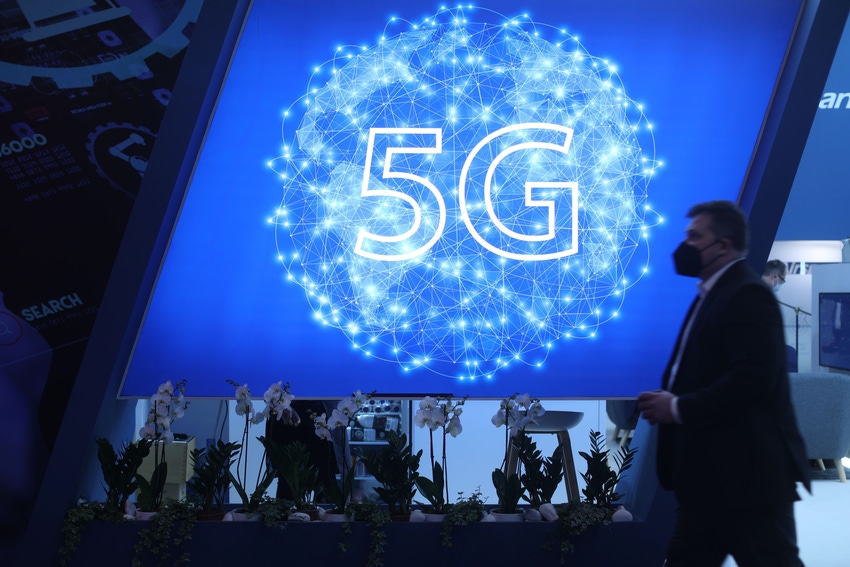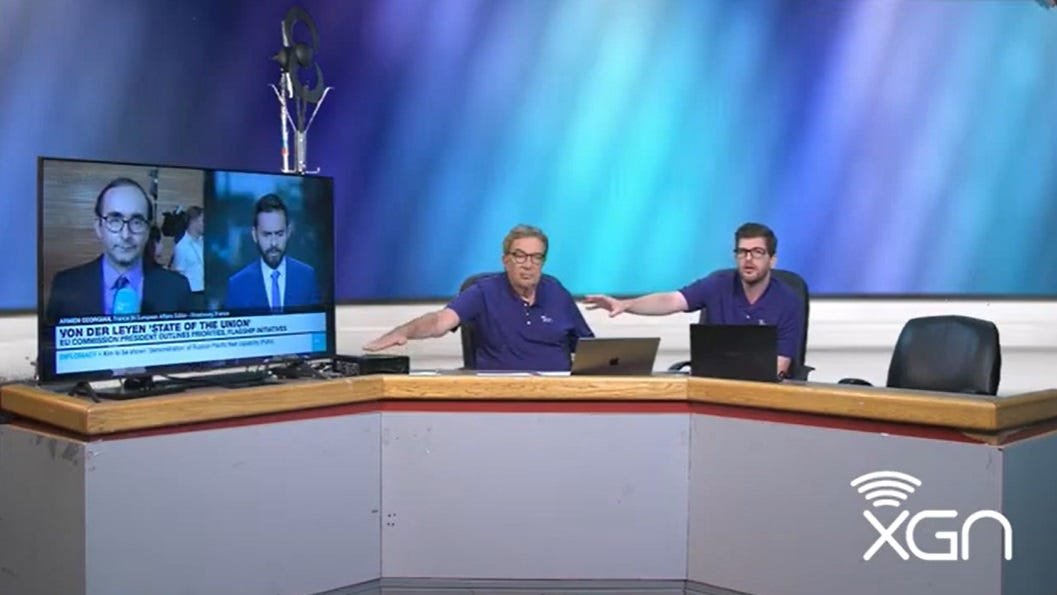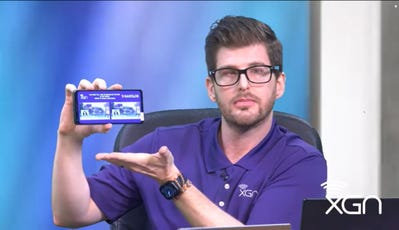Boston TV station lights up 5G broadcast field trial
WWOO, a low-power TV station, has connected with a mix of partners to test 5G broadcasting with an initial focus on delivering live TV and emergency alerting to Qualcomm-powered smartphone reference designs.

At a Glance
- WWOO-TV is the first US TV station to conduct live tests of 5G broadcast technology.
- Using an FCC experimental license, the 5G broadcast proof-of-concept tests delivery of live TV to smartphones.
- The 5G broadcast trial will also test out emergency alerts and data and video for first responders.
WWOO-TV, a Boston-area low-power TV station, this week became the first in the US to launch live tests of 5G broadcast technology. The tests are initially focused on delivering high-definition TV signals and supporting first responder applications to smartphones equipped to receive 5G broadcast signals.
Billed as a proof-of-concept, WWOO-TV launched the signal about three months after the FCC granted a temporary, experimental license for the trial.
The trial is part of a broader plan to create a national 5G broadcast system that will tap into low-power UHF frequencies to deliver one-way (downstream-only), 5G-based signals that complement existing interactive 5G cellular networks. Some initial use cases include broadcasting local TV signals to 5G smartphones, taking stress off the mobile 5G network, transmitting alerts to consumers, and delivering files, video and other critical information to first responders.

XGen Network's 'SuperFrank' Copsidas (left) and Andrew Towe demonstrate a live broadcast feed being delivered to a TV via a set-top capable of supporting 5G broadcast signals. (Source: XGen Network/YouTube)
The demo delivered a 5G broadcast signal carrying a live HD feed of the France 24 news channel to a 5G-capable set-top connected to a big screen TV, and to Qualcomm-powered smartphone reference designs that were modified to filter in UHF frequencies. The 3GPP recently approved UHF frequencies in a new 108 band (480MHz-608MHz).
The demo also tested delivery of emergency alerts over a 5G broadcast signal received by the phone less than a second after the alert was issued.

XGen Network also demonstrated a live TV feed to a Qualcomm-powered smartphone that can filter in UHF frequencies and support 5G broadcast signals. (Source: XGen Network/YouTube)
In addition to WWOO-TV and Qualcomm, several other partners are participating in the field trial, including Ateme (encoding), Westpond Technologies (data encoding), Rohde & Schwarz (the broadcast chain and transmitter) and Nakolos (smartphone app). Also on board is XGen Network, a company that intends to serve as a broker for the 5,300-plus LPTV stations in the US and become a one-stop-shop for wireless carriers and content owners interested in becoming part of the proposed 5G broadcast platform.
5G broadcast and ATSC 3.0
5G broadcast technology is still in its "infancy" but is expected to be rolled out in the US in about a year from now, SuperFrank Copsidas, founder of the Low Power TV Broadcasters Association and head of XGen Network, said during the demo.
5G broadcast is emerging in the US as many broadcasters, including those running high-power stations, are upgrading to ATSC 3.0, an IP-based, next-generation broadcast signaling standard. There's an ongoing debate about whether 5G broadcast and ATSC 3.0, which carries the consumer branding of "NextGenTV," are competitive or complementary.
Copsidas conceded that ATSC 3.0 is several years ahead of 5G broadcast technology and provides a "much more robust platform right now" for multiple streams, 4K video, Dolby surround sound and other enhancements to the consumer experience. But he believes 5G broadcast holds a key advantage because it uses global 5G standards and can take advantage of the broad 5G ecosystem.
5G broadcast can "leverage the smartphone's economy of scale, which is really a game-changer for the broadcasting community," Lorenzo Casaccia, VP of tech standards and IP at Qualcomm Europe, said in recorded remarks. "This makes 5G broadcast potentially a critical public infrastructure for reliably reaching consumers as well as first responders."
Another critical element is that 5G broadcast doesn't require smartphones to be equipped with SIM cards to receive broadcast signals, Casaccia added. "So, it's truly free-to-air TV," he said.
Sinclair: Don't believe the hype
A pair of execs at Sinclair Broadcast Group, a major US broadcaster that's investing and deploying ATSC 3.0, penned an opinion holding that the two approaches "are not equal" and warned readers not to get overwhelmed by the "hype" suggesting that 5G broadcast holds an edge because of its ties to 3GPP standards.
"The implied notion that, because 5G Broadcast is a 3GPP standard and in phones today, it somehow magically opens the market to hundreds of millions of devices compatible with 5G wireless reception is wishful thinking," they wrote.
The Sinclair execs acknowledged that both technologies provide IP-based transport. "But the similarities end at the physical layer: The ATSC 3.0 system is dramatically more efficient, robust, mobile, and evolvable," they argued.
They also held that ATSC 3.0 isn't regionally limited, but is instead "adaptable for different use cases in different countries."
The Sinclair execs outlined several reasons why they believe ATSC "wins out," including better error correction, "bootstrap" signaling in ATSC 3.0 that enables the platform to identify many different signals, and emergency alerting that can "wake up devices at very low signal levels – think deep indoors."
They argued against claims that the ATSC 3.0 physical layer is incompatible with International Mobile Telecommunications (IMT) services, calling them "misleading." The execs also referenced past work showing ATSC 3.0 signals delivered to smartphones and claimed that the cost of adding ATSC 3.0 capabilities to silicon "is negligible."
FCC supports both
The FCC recently introduced new rules aimed at smoothing the transition to ATSC 3.0. It also approved the 5G broadcast experimental license in Boston without a hitch. FCC Commissioner Nathan Simington offered words of support for the trial in recorded remarks shown during the 5G broadcast demo.
"Broadcasters must continue to inform, educate and entertain the American people and they must do so often an ever-narrowing slice of media revenue," he said. "As broadcasters transition to a leaner role, the Commission must help in clearing a regulatory path no longer solely grounded in primary video distribution."
About the Author(s)
You May Also Like




_International_Software_Products.jpeg?width=300&auto=webp&quality=80&disable=upscale)







